 Anyone who has seen the turntablism documentary Scratchwill remember the scene featuring Josh Charles, AKA DJ Shadow. He stoodin the secret basement of his favorite record store (locationundisclosed, of course) amid huge stacks of dusty, obscure vinyl,explaining the philosophy and allure of "crate digging". Hisinexhaustible energy for searching out rare groove, forgotten soul, andhopelessly esoteric breakbeats has given his albums a dark, shadowyatmosphere wholly appropriate to his moniker. While most of Shadow'searly mixes were characterized by clever constructions of breakbeatsfrom rare jazz and funk instrumentals from the likes of David Axelrodand Cannonball Adderly, his recent work (with the exception of most ofhis disappointing major label album) has taken him to the farthestreaches of psychedelia and European progressive rock. Being somewhat ofa rare psych and prog enthusiast, I admire this new direction and amdownright envious of the incredibly bizarre tracks he has managed todig up for this 120-minute live BBC mix. Diminishing Returns isa new, independently released 2-CD set that comprises the entiretwo-hour BBC mix as well as a brand new bonus track. The first hour ofthe mix focuses on underground, old school and leftfield hip-hoptracks. Many of these funny, clever and/or weird raps are matched withalternate breakbeats from another source. There is no tracklisting orsample credits to be found in the nonexistent liner notes, so most ofthese artists remain completely enigmatic to me. Someone more cleverthan I should try to name all of the artists and songs used here, but Iam hopeless at blindly identifying tracks. This first part of thesession is a dynamic hour of rarely-heard hip-hop gems, but it cannothold a candle to the genius of the final 40 minutes. For this last halfof the mix, Shadow creates a seamless adventure through all thingsdusty, strange and rare, focusing on obscure psychedelic rock andstrange progressive. Some of these songs are truly off-kilter andhallucinogenic, featuring trippy, introspective vocals, effects-ladenguitar noodling and mesmerizing beats. This is an impressive assemblageof esoterica that you are guaranteed never to hear anywhere else. Ialmost expected Arcesia, the acid-addled big band leader featured on Songs in the Key of Zto come into the mix singing "Butterfly Mind." At a staggering twohours, the mix still feels tight and engaging, which is an impressivefeat. The bonus track on the disc is an average re-hash of the kind ofhip-hop/rock instrumental constructs that dominated The Private Press. Diminishing Returns is a satisfying DJ mix, right up there with gems like Coldcut's 70 Minutes of Madness.If DJ Shadow wants to retain his credibility, he needs to stay awayfrom the feeble and average material evidenced on his major labelalbum, and stick to the kind of musical integrity he displays on mixeslike this one.
Anyone who has seen the turntablism documentary Scratchwill remember the scene featuring Josh Charles, AKA DJ Shadow. He stoodin the secret basement of his favorite record store (locationundisclosed, of course) amid huge stacks of dusty, obscure vinyl,explaining the philosophy and allure of "crate digging". Hisinexhaustible energy for searching out rare groove, forgotten soul, andhopelessly esoteric breakbeats has given his albums a dark, shadowyatmosphere wholly appropriate to his moniker. While most of Shadow'searly mixes were characterized by clever constructions of breakbeatsfrom rare jazz and funk instrumentals from the likes of David Axelrodand Cannonball Adderly, his recent work (with the exception of most ofhis disappointing major label album) has taken him to the farthestreaches of psychedelia and European progressive rock. Being somewhat ofa rare psych and prog enthusiast, I admire this new direction and amdownright envious of the incredibly bizarre tracks he has managed todig up for this 120-minute live BBC mix. Diminishing Returns isa new, independently released 2-CD set that comprises the entiretwo-hour BBC mix as well as a brand new bonus track. The first hour ofthe mix focuses on underground, old school and leftfield hip-hoptracks. Many of these funny, clever and/or weird raps are matched withalternate breakbeats from another source. There is no tracklisting orsample credits to be found in the nonexistent liner notes, so most ofthese artists remain completely enigmatic to me. Someone more cleverthan I should try to name all of the artists and songs used here, but Iam hopeless at blindly identifying tracks. This first part of thesession is a dynamic hour of rarely-heard hip-hop gems, but it cannothold a candle to the genius of the final 40 minutes. For this last halfof the mix, Shadow creates a seamless adventure through all thingsdusty, strange and rare, focusing on obscure psychedelic rock andstrange progressive. Some of these songs are truly off-kilter andhallucinogenic, featuring trippy, introspective vocals, effects-ladenguitar noodling and mesmerizing beats. This is an impressive assemblageof esoterica that you are guaranteed never to hear anywhere else. Ialmost expected Arcesia, the acid-addled big band leader featured on Songs in the Key of Zto come into the mix singing "Butterfly Mind." At a staggering twohours, the mix still feels tight and engaging, which is an impressivefeat. The bonus track on the disc is an average re-hash of the kind ofhip-hop/rock instrumental constructs that dominated The Private Press. Diminishing Returns is a satisfying DJ mix, right up there with gems like Coldcut's 70 Minutes of Madness.If DJ Shadow wants to retain his credibility, he needs to stay awayfrom the feeble and average material evidenced on his major labelalbum, and stick to the kind of musical integrity he displays on mixeslike this one.  Anyone who has seen the turntablism documentary Scratchwill remember the scene featuring Josh Charles, AKA DJ Shadow. He stoodin the secret basement of his favorite record store (locationundisclosed, of course) amid huge stacks of dusty, obscure vinyl,explaining the philosophy and allure of "crate digging". Hisinexhaustible energy for searching out rare groove, forgotten soul, andhopelessly esoteric breakbeats has given his albums a dark, shadowyatmosphere wholly appropriate to his moniker. While most of Shadow'searly mixes were characterized by clever constructions of breakbeatsfrom rare jazz and funk instrumentals from the likes of David Axelrodand Cannonball Adderly, his recent work (with the exception of most ofhis disappointing major label album) has taken him to the farthestreaches of psychedelia and European progressive rock. Being somewhat ofa rare psych and prog enthusiast, I admire this new direction and amdownright envious of the incredibly bizarre tracks he has managed todig up for this 120-minute live BBC mix. Diminishing Returns isa new, independently released 2-CD set that comprises the entiretwo-hour BBC mix as well as a brand new bonus track. The first hour ofthe mix focuses on underground, old school and leftfield hip-hoptracks. Many of these funny, clever and/or weird raps are matched withalternate breakbeats from another source. There is no tracklisting orsample credits to be found in the nonexistent liner notes, so most ofthese artists remain completely enigmatic to me. Someone more cleverthan I should try to name all of the artists and songs used here, but Iam hopeless at blindly identifying tracks. This first part of thesession is a dynamic hour of rarely-heard hip-hop gems, but it cannothold a candle to the genius of the final 40 minutes. For this last halfof the mix, Shadow creates a seamless adventure through all thingsdusty, strange and rare, focusing on obscure psychedelic rock andstrange progressive. Some of these songs are truly off-kilter andhallucinogenic, featuring trippy, introspective vocals, effects-ladenguitar noodling and mesmerizing beats. This is an impressive assemblageof esoterica that you are guaranteed never to hear anywhere else. Ialmost expected Arcesia, the acid-addled big band leader featured on Songs in the Key of Zto come into the mix singing "Butterfly Mind." At a staggering twohours, the mix still feels tight and engaging, which is an impressivefeat. The bonus track on the disc is an average re-hash of the kind ofhip-hop/rock instrumental constructs that dominated The Private Press. Diminishing Returns is a satisfying DJ mix, right up there with gems like Coldcut's 70 Minutes of Madness.If DJ Shadow wants to retain his credibility, he needs to stay awayfrom the feeble and average material evidenced on his major labelalbum, and stick to the kind of musical integrity he displays on mixeslike this one.
Anyone who has seen the turntablism documentary Scratchwill remember the scene featuring Josh Charles, AKA DJ Shadow. He stoodin the secret basement of his favorite record store (locationundisclosed, of course) amid huge stacks of dusty, obscure vinyl,explaining the philosophy and allure of "crate digging". Hisinexhaustible energy for searching out rare groove, forgotten soul, andhopelessly esoteric breakbeats has given his albums a dark, shadowyatmosphere wholly appropriate to his moniker. While most of Shadow'searly mixes were characterized by clever constructions of breakbeatsfrom rare jazz and funk instrumentals from the likes of David Axelrodand Cannonball Adderly, his recent work (with the exception of most ofhis disappointing major label album) has taken him to the farthestreaches of psychedelia and European progressive rock. Being somewhat ofa rare psych and prog enthusiast, I admire this new direction and amdownright envious of the incredibly bizarre tracks he has managed todig up for this 120-minute live BBC mix. Diminishing Returns isa new, independently released 2-CD set that comprises the entiretwo-hour BBC mix as well as a brand new bonus track. The first hour ofthe mix focuses on underground, old school and leftfield hip-hoptracks. Many of these funny, clever and/or weird raps are matched withalternate breakbeats from another source. There is no tracklisting orsample credits to be found in the nonexistent liner notes, so most ofthese artists remain completely enigmatic to me. Someone more cleverthan I should try to name all of the artists and songs used here, but Iam hopeless at blindly identifying tracks. This first part of thesession is a dynamic hour of rarely-heard hip-hop gems, but it cannothold a candle to the genius of the final 40 minutes. For this last halfof the mix, Shadow creates a seamless adventure through all thingsdusty, strange and rare, focusing on obscure psychedelic rock andstrange progressive. Some of these songs are truly off-kilter andhallucinogenic, featuring trippy, introspective vocals, effects-ladenguitar noodling and mesmerizing beats. This is an impressive assemblageof esoterica that you are guaranteed never to hear anywhere else. Ialmost expected Arcesia, the acid-addled big band leader featured on Songs in the Key of Zto come into the mix singing "Butterfly Mind." At a staggering twohours, the mix still feels tight and engaging, which is an impressivefeat. The bonus track on the disc is an average re-hash of the kind ofhip-hop/rock instrumental constructs that dominated The Private Press. Diminishing Returns is a satisfying DJ mix, right up there with gems like Coldcut's 70 Minutes of Madness.If DJ Shadow wants to retain his credibility, he needs to stay awayfrom the feeble and average material evidenced on his major labelalbum, and stick to the kind of musical integrity he displays on mixeslike this one. 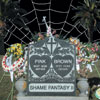 The guitarist dressed in silly pink stocking apparel that masked hisidentity. The drummer dressed much the same but in brown. If they gaveinterviews, I guess its fairly unlikely they got asked, "So why did youcall the band Pink and Brown?" Imagine Oxes stripped down to a lowerdensity screechier hollerin' clobberin' combo and you'd have a fairlygood idea of where these two light-hearted heavy-handed San Franciscoscene stalwarts were coming from. Actually you'd probably have a bandwho sound so much like Arab On Radar that they could be the same sillypost-punkers, albeit with the vocals mixed lower or not at all. As forwhere they're going to, who knows? Brown plays in Young People whosounded like Cat Power might if she got some interesting noises intoher guitar and wrote better songs on the one song I heard. Pink playsin a bunch of other bands I've never heard. But I have heard this CDand can say that compiling everything they released before giving upthis fancy dress gig was a pretty good idea and if you've ever groovedto the kind of jagged rock storms that the Skin Graft label served upin abundance, you'll probably have a pretty good time at the Pink andBrown party. Its itchy, scratchy nerd rock as opposed to math rock,because these are the kids who burnt their homework and ran through thestreets squealing with socks pulled over their heads. The vinyl versionof this album only features the five new songs they recorded on NewYears day 2003 so unless you were a completist Pink and Brown fan, theCD seems a better bet, as there are 22 tracks on that. But how doesthis rate on my Loadometer? Not as madcap noisefried as Lightning Boltor Sightings, but a lot more fun than Neon Hunk. Don't even think aboutgetting this until you have that stompin' Noxagt album on Load which Ireviewed a few weeks back
The guitarist dressed in silly pink stocking apparel that masked hisidentity. The drummer dressed much the same but in brown. If they gaveinterviews, I guess its fairly unlikely they got asked, "So why did youcall the band Pink and Brown?" Imagine Oxes stripped down to a lowerdensity screechier hollerin' clobberin' combo and you'd have a fairlygood idea of where these two light-hearted heavy-handed San Franciscoscene stalwarts were coming from. Actually you'd probably have a bandwho sound so much like Arab On Radar that they could be the same sillypost-punkers, albeit with the vocals mixed lower or not at all. As forwhere they're going to, who knows? Brown plays in Young People whosounded like Cat Power might if she got some interesting noises intoher guitar and wrote better songs on the one song I heard. Pink playsin a bunch of other bands I've never heard. But I have heard this CDand can say that compiling everything they released before giving upthis fancy dress gig was a pretty good idea and if you've ever groovedto the kind of jagged rock storms that the Skin Graft label served upin abundance, you'll probably have a pretty good time at the Pink andBrown party. Its itchy, scratchy nerd rock as opposed to math rock,because these are the kids who burnt their homework and ran through thestreets squealing with socks pulled over their heads. The vinyl versionof this album only features the five new songs they recorded on NewYears day 2003 so unless you were a completist Pink and Brown fan, theCD seems a better bet, as there are 22 tracks on that. But how doesthis rate on my Loadometer? Not as madcap noisefried as Lightning Boltor Sightings, but a lot more fun than Neon Hunk. Don't even think aboutgetting this until you have that stompin' Noxagt album on Load which Ireviewed a few weeks back There are altogether too many various artist compilations currently outin the market that presume to document a particular musical scene or,worse, claim to serve as a kind of audio history lesson. All of thesereleases seem to be suggesting that they are the "final word" on aparticular genre or scene. Most fall far short of this goal. Recently,Rough Trade released a "post punk" primer, which included a few greatrarities from the original era like Liquid Liquid and World DominationEnterprises, together with a bunch of head-scratchingly inappropriateinclusions from newer artists. Very little thought seems to be given totrack sequencing in most cases, making for an uneven listen that ismore annoying that it is educational. Many of these compilations alsorecycle the same tracks that have appeared on numerous other releases.I can count on one hand the number of compilations that I have found tobe valuable, and among them is Soul Jazz's In The Beginning, There Was Rhythmfrom 2001. True, some of the tracks included were widely available onCD already, but the selection and sequencing of tracks was trulyinspired. So, I had high hopes for the newest Soul Jazz "music history"comp, New York Noise: Dance Music From the New York Underground1978-1982. The compilers have attempted to marry the disparate genresof post-punk dance, underground disco, no-wave and hip-hop under onebig NYC banner. With a few exceptions, they succeed. Liquid Liquid's"Optimo" is a great starting point, combining African rhythms and punkurgency into a tense, funky groove. Filling out the "mutant disco"quotient are rare selections from Konk, The Dance and The Bloods. BillLaswell's Material are included, with a dialogue-sampling disco-housemeltdown that sounds way ahead of its time. NYC underground avant-discoprodigy Arthur Russell is here under his Dinosaur L guise, with thetypically brilliant "Clean on Your Bean #1". It's nice to hear thiscrisply remastered song without having to shell out $700 for theoriginal 12" on Sleeping Bag. ESG and The Bush Tetras represent for theladies with a couple estrogen-fueled funk tracks. Defunkt's "Defunkt"seems a little out of place; it's nice, but a rather typical late-70'sdisco-funk number. Rahmelzee vs. K. Rob's long-winded "Beat Bop" standsalong with Grandmaster Flash's "White Lines" as a masterpiece of thefirst era of NYC hip-hop. I'm not sure what the compilers were thinkingby the inclusion of DNA, MARS and The Contortions. Sure, these bandswere included on the epochal 1978 No New York LP which defined theno-wave aesthetic, but does this qualify as dance music? Only anepileptic on ecstasy would try to dance to these noisy, herky-jerkyrhythms. Ditto Glenn Branca's eight-minute, multiple-guitar fantasia"Lesson No.1." These tracks are all quite good, but they stick out likea sore thumb on a so-called "dance music" compilation. These are minorquibbles, however, as the music is brilliant, and MARS' "HelenFordsdale" has always been my favorite track from the No New Yorkcompilation. Words are insufficient to describe the drama and intensityof this two-and-a-half minute explosion of rock n' roll chaos. All inall, New York Noise is a valuable compilation for those of us who don'tmind pedantic compilers giving us a lesson in musical history.
There are altogether too many various artist compilations currently outin the market that presume to document a particular musical scene or,worse, claim to serve as a kind of audio history lesson. All of thesereleases seem to be suggesting that they are the "final word" on aparticular genre or scene. Most fall far short of this goal. Recently,Rough Trade released a "post punk" primer, which included a few greatrarities from the original era like Liquid Liquid and World DominationEnterprises, together with a bunch of head-scratchingly inappropriateinclusions from newer artists. Very little thought seems to be given totrack sequencing in most cases, making for an uneven listen that ismore annoying that it is educational. Many of these compilations alsorecycle the same tracks that have appeared on numerous other releases.I can count on one hand the number of compilations that I have found tobe valuable, and among them is Soul Jazz's In The Beginning, There Was Rhythmfrom 2001. True, some of the tracks included were widely available onCD already, but the selection and sequencing of tracks was trulyinspired. So, I had high hopes for the newest Soul Jazz "music history"comp, New York Noise: Dance Music From the New York Underground1978-1982. The compilers have attempted to marry the disparate genresof post-punk dance, underground disco, no-wave and hip-hop under onebig NYC banner. With a few exceptions, they succeed. Liquid Liquid's"Optimo" is a great starting point, combining African rhythms and punkurgency into a tense, funky groove. Filling out the "mutant disco"quotient are rare selections from Konk, The Dance and The Bloods. BillLaswell's Material are included, with a dialogue-sampling disco-housemeltdown that sounds way ahead of its time. NYC underground avant-discoprodigy Arthur Russell is here under his Dinosaur L guise, with thetypically brilliant "Clean on Your Bean #1". It's nice to hear thiscrisply remastered song without having to shell out $700 for theoriginal 12" on Sleeping Bag. ESG and The Bush Tetras represent for theladies with a couple estrogen-fueled funk tracks. Defunkt's "Defunkt"seems a little out of place; it's nice, but a rather typical late-70'sdisco-funk number. Rahmelzee vs. K. Rob's long-winded "Beat Bop" standsalong with Grandmaster Flash's "White Lines" as a masterpiece of thefirst era of NYC hip-hop. I'm not sure what the compilers were thinkingby the inclusion of DNA, MARS and The Contortions. Sure, these bandswere included on the epochal 1978 No New York LP which defined theno-wave aesthetic, but does this qualify as dance music? Only anepileptic on ecstasy would try to dance to these noisy, herky-jerkyrhythms. Ditto Glenn Branca's eight-minute, multiple-guitar fantasia"Lesson No.1." These tracks are all quite good, but they stick out likea sore thumb on a so-called "dance music" compilation. These are minorquibbles, however, as the music is brilliant, and MARS' "HelenFordsdale" has always been my favorite track from the No New Yorkcompilation. Words are insufficient to describe the drama and intensityof this two-and-a-half minute explosion of rock n' roll chaos. All inall, New York Noise is a valuable compilation for those of us who don'tmind pedantic compilers giving us a lesson in musical history.- Liquid Liquid - Optimo
- Dinosaur L - Clean on Your Bean #1
- MARS - Helen Fordsdale
 It's difficult to believe that The Clientele have only gotten around to releasing a full length album now, six years after they appeared on the Fierce Panda 7" compilation, Cry Me a Liver. Although the London-based trio have released a steady stream of 7" singles, EPs, and even a critically acclaimed singles compilation in 2000, The Violet Hour finds the band exploring a larger framework and expanding their sound. Overall, the production sounds more focused than their previous efforts, though it does retain much of the charming muddiness of some of their earliest releases such as "All the Dust and Glass."
It's difficult to believe that The Clientele have only gotten around to releasing a full length album now, six years after they appeared on the Fierce Panda 7" compilation, Cry Me a Liver. Although the London-based trio have released a steady stream of 7" singles, EPs, and even a critically acclaimed singles compilation in 2000, The Violet Hour finds the band exploring a larger framework and expanding their sound. Overall, the production sounds more focused than their previous efforts, though it does retain much of the charming muddiness of some of their earliest releases such as "All the Dust and Glass."
 There is a long dark and wet tunnel ahead of me and at its end is apartially opened door with a faint blue glow pulsing from within:something horrible is happening inside and it scares me. I walk forwardcautiously and peer inside and then each of my senses is assaulted tothe point of death. I am left with only my hearing and tactile sensesto manouevre a large and very dangerous habitat. The dry wheezes ofbroken machinery, the incoherent babble of hyper morons, and the soundof a thousand tiny legs echo and rebound all about me. Distant moansdart down long corridors and bring messages of pain and incomingmisanthropy. There is some shelter, some spaces to breathe in withoutfear of being heard by whatever it is that's out there. Pacifying bellsflow somewhere in the distance and the gentle hum of computers becomesa lullaby for my weary head. Hell is still out there somewhere, though.Before long screams demolish the walls and send chills down my spine.No matter where I run these sounds follow me. My hands press againstthe cold and metallic walls hoping to find some familiar nook or somesemblance of home. There's nothing here that I recognize. This is anutterly alien world. Eventually I fall asleep and those same soundshaunt my dreams only they are perverted. Everything has slowed downwith only momentary stabs of pain. The sound of water dripping to thefloor wakes me and I bathe in it happily: here finally is some relief.I lay back and drift in the clear blue water staring at the sun andwonder to myself: did I ever wake up from that dream? Was I ever evenawake at all?
There is a long dark and wet tunnel ahead of me and at its end is apartially opened door with a faint blue glow pulsing from within:something horrible is happening inside and it scares me. I walk forwardcautiously and peer inside and then each of my senses is assaulted tothe point of death. I am left with only my hearing and tactile sensesto manouevre a large and very dangerous habitat. The dry wheezes ofbroken machinery, the incoherent babble of hyper morons, and the soundof a thousand tiny legs echo and rebound all about me. Distant moansdart down long corridors and bring messages of pain and incomingmisanthropy. There is some shelter, some spaces to breathe in withoutfear of being heard by whatever it is that's out there. Pacifying bellsflow somewhere in the distance and the gentle hum of computers becomesa lullaby for my weary head. Hell is still out there somewhere, though.Before long screams demolish the walls and send chills down my spine.No matter where I run these sounds follow me. My hands press againstthe cold and metallic walls hoping to find some familiar nook or somesemblance of home. There's nothing here that I recognize. This is anutterly alien world. Eventually I fall asleep and those same soundshaunt my dreams only they are perverted. Everything has slowed downwith only momentary stabs of pain. The sound of water dripping to thefloor wakes me and I bathe in it happily: here finally is some relief.I lay back and drift in the clear blue water staring at the sun andwonder to myself: did I ever wake up from that dream? Was I ever evenawake at all? 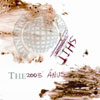 As featured on NPR, Australian Luke Collision, a.k.a. Dsico is comingforth as being one of the stars of the mash-up. His label, Spasticatedhas issued this: a parody wrapped in irony and threatened by a lawsuit.Released in a limited quantity of 500, all the contributors to Ministry of Shit are probably well aware that mash-ups are becoming a trendy thing to do, however, cleverly masked as a dreadful Ministry of Sound compilation, it's easy to forgive them for making a mockery of a larger, even more obnoxious trend. For those fans of The Best Bootlegs in The World,this is a brand new compilation to go on the shelf. Contained hereinare plenty of all-new illegal remixes of Eminem, Madonna, JustinTimberlake and other pop icons. Some are clever and frighteningmutations (yes, it's possible to make Avril Lavigne's voice evenworse!) while many others like Dsico's "I R*cked Britney," are modernremixes. (I wish I knew where Toecutter's "Shit on Me" actually camefrom - it's got far more sex than the entire Nymphomatriarch releaseand if it weren't for the FCC, I'd be playing this song on my radioshow all the time.) AC/3P's "Oi," on the other hand is just a downrightgratuitous, revolting cover with unbearable vocals. Luckily there'splenty of variety on the compilation to not make this sound like thesame track over and over again. The disc closes much like apull-my-finger fart joke that actually is funny every time (I keepthinking of a South Park episode from this year), and with the piggyreference, "Ice Ice Bacon" can only be Stockport's finest V/Vm crew(come on, the artist name is Trotters). My hope is that this compactually finds its way into peoples hands by grotesque mistake (sorecord store clerks, look for it and strategically shove it in thewrong place). With any luck, something like this can potentially openthe eyes of consumers looking to get a moronic dance fix; findsomething this amusing, stupid, and clever; and leave the regular shitbehind. As a bonus, a crafty remixed video of Dsico's "I R*cked Britney(Moonwalk Style)" (combining the white guy who thinks he's black withthe black guy who thinks he's white) is included in the data portion ofthe CD.
As featured on NPR, Australian Luke Collision, a.k.a. Dsico is comingforth as being one of the stars of the mash-up. His label, Spasticatedhas issued this: a parody wrapped in irony and threatened by a lawsuit.Released in a limited quantity of 500, all the contributors to Ministry of Shit are probably well aware that mash-ups are becoming a trendy thing to do, however, cleverly masked as a dreadful Ministry of Sound compilation, it's easy to forgive them for making a mockery of a larger, even more obnoxious trend. For those fans of The Best Bootlegs in The World,this is a brand new compilation to go on the shelf. Contained hereinare plenty of all-new illegal remixes of Eminem, Madonna, JustinTimberlake and other pop icons. Some are clever and frighteningmutations (yes, it's possible to make Avril Lavigne's voice evenworse!) while many others like Dsico's "I R*cked Britney," are modernremixes. (I wish I knew where Toecutter's "Shit on Me" actually camefrom - it's got far more sex than the entire Nymphomatriarch releaseand if it weren't for the FCC, I'd be playing this song on my radioshow all the time.) AC/3P's "Oi," on the other hand is just a downrightgratuitous, revolting cover with unbearable vocals. Luckily there'splenty of variety on the compilation to not make this sound like thesame track over and over again. The disc closes much like apull-my-finger fart joke that actually is funny every time (I keepthinking of a South Park episode from this year), and with the piggyreference, "Ice Ice Bacon" can only be Stockport's finest V/Vm crew(come on, the artist name is Trotters). My hope is that this compactually finds its way into peoples hands by grotesque mistake (sorecord store clerks, look for it and strategically shove it in thewrong place). With any luck, something like this can potentially openthe eyes of consumers looking to get a moronic dance fix; findsomething this amusing, stupid, and clever; and leave the regular shitbehind. As a bonus, a crafty remixed video of Dsico's "I R*cked Britney(Moonwalk Style)" (combining the white guy who thinks he's black withthe black guy who thinks he's white) is included in the data portion ofthe CD.- Wobbly - Let Me Know
- Toecutter - Shit On Me
- Trotter - Ice Ice Bacon
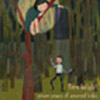 Lullabies and fairy tales can possess certain qualities that belietheir gentle names, and might well inspire sleepless nights as opposedto sweet dreams. The former speak of helpless, cradle-bound babiesfalling to their certain doom, and anyone who has glanced through theoriginal stories of the brothers Grimm knows that their name was arather apt description of their stories' conclusions. It's amazing howa soothing voice or an impeccable melody can assuage the rather irksomefeel of the gothic subject matter. On 'Seven Years of Seven Limbs,'Fern Knight (comprised of ex-Difference Engine members Margie Wienk andMike Corcoran) has given us a collection of their own folktales thatplay with darker shades of storytelling imbued with a fairy tale likesense of wonder. From the outset of "She Who Was So Precious to You,"we find a sparse arrangement of acoustic guitar and strings that arelit up by Wienk's gorgeous vocals, like a shaft of sunlight peekingthrough a dark thicket of dead trees. The lyrics are foreboding andpresents us with the first of many moments of grotesque beauty, "If thefull moon won't illuminate us / if the wine glass won't even stay full/ if the wolf won't eliminate you / then I will." It is a series ofimages so vibrant, so enticingly conveyed that you're pulled in; andyet they are also full of malice. This malevolence is undercut somewhatby a desolate feeling, as in "Chelyabinsk," which gives off a sense ofgreat distance and overwhelming loss that has settled into fear andregret. In "Boxing Day", Wienk dons a red riding hood, declaring "Idon't think it's okay to be going downhill with you" to whoever orwhatever serves as the big bad wolf in her emotional dark forest. Thesong begins with the twang of a slide guitar, however over the courseof its seven minutes, it loses the plot and begins to drift off of itsstructure finally dissolving into a wispy collection of church bells,alarm calls, and telephone ringers before segueing into the rain andstreet noise intro of "Mover Ghost." In the waning minutes of the disc,the metaphor and imagery of the wolves, the dark forests and watchfulmoons begins to fade away in favor of more literal expressions of theconflicts they embodied. "Make your record of it / You're such an easytarget / mark those days off on your wall." The distance is nowmeasured in time, not symbolized by some far off Russian outpost.'Seven Years of Severed Limbs' closes with the stunningly beautiful"Dog Named Summer," loaded full with an impeccable melody and moresoaring vocals that shape the scene of that golden yellow summer sundipping below the rooftops, the heaviness of the heat and the method ofyour movements. Fern Knight draws a slow story, one that makes for anexcellent tale that explores those winding forest paths and the thingsthat lie hidden between the lines
Lullabies and fairy tales can possess certain qualities that belietheir gentle names, and might well inspire sleepless nights as opposedto sweet dreams. The former speak of helpless, cradle-bound babiesfalling to their certain doom, and anyone who has glanced through theoriginal stories of the brothers Grimm knows that their name was arather apt description of their stories' conclusions. It's amazing howa soothing voice or an impeccable melody can assuage the rather irksomefeel of the gothic subject matter. On 'Seven Years of Seven Limbs,'Fern Knight (comprised of ex-Difference Engine members Margie Wienk andMike Corcoran) has given us a collection of their own folktales thatplay with darker shades of storytelling imbued with a fairy tale likesense of wonder. From the outset of "She Who Was So Precious to You,"we find a sparse arrangement of acoustic guitar and strings that arelit up by Wienk's gorgeous vocals, like a shaft of sunlight peekingthrough a dark thicket of dead trees. The lyrics are foreboding andpresents us with the first of many moments of grotesque beauty, "If thefull moon won't illuminate us / if the wine glass won't even stay full/ if the wolf won't eliminate you / then I will." It is a series ofimages so vibrant, so enticingly conveyed that you're pulled in; andyet they are also full of malice. This malevolence is undercut somewhatby a desolate feeling, as in "Chelyabinsk," which gives off a sense ofgreat distance and overwhelming loss that has settled into fear andregret. In "Boxing Day", Wienk dons a red riding hood, declaring "Idon't think it's okay to be going downhill with you" to whoever orwhatever serves as the big bad wolf in her emotional dark forest. Thesong begins with the twang of a slide guitar, however over the courseof its seven minutes, it loses the plot and begins to drift off of itsstructure finally dissolving into a wispy collection of church bells,alarm calls, and telephone ringers before segueing into the rain andstreet noise intro of "Mover Ghost." In the waning minutes of the disc,the metaphor and imagery of the wolves, the dark forests and watchfulmoons begins to fade away in favor of more literal expressions of theconflicts they embodied. "Make your record of it / You're such an easytarget / mark those days off on your wall." The distance is nowmeasured in time, not symbolized by some far off Russian outpost.'Seven Years of Severed Limbs' closes with the stunningly beautiful"Dog Named Summer," loaded full with an impeccable melody and moresoaring vocals that shape the scene of that golden yellow summer sundipping below the rooftops, the heaviness of the heat and the method ofyour movements. Fern Knight draws a slow story, one that makes for anexcellent tale that explores those winding forest paths and the thingsthat lie hidden between the lines After several years of collaborative and one-off solo projects, Mike Paradinas finally returns to the moniker that he is most recognized for. Threatened to be his final µ-ziq album, Bilious Paths offers 53 thrilling minutes of eclectic electronics, including bits of hardcore, funk, hip-hop, 2-step, rave and, of course, drill n bass.
After several years of collaborative and one-off solo projects, Mike Paradinas finally returns to the moniker that he is most recognized for. Threatened to be his final µ-ziq album, Bilious Paths offers 53 thrilling minutes of eclectic electronics, including bits of hardcore, funk, hip-hop, 2-step, rave and, of course, drill n bass.
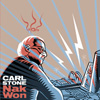 The three songs that compose this full-length present three distinctexperiences: the chaos of the electric world, the sublime glow of theheavenly spheres, and the mayhem of an ever-increasing globalconsciousness. It all begins with sine waves bolting through theatmosphere like a futuristic weapon bent on destroying the moon. Slowlythe tones begin to skip and play musical chairs changing both theirtones and their placement inside my brain. Once inside they wreak havocand expand the auditory receptors in preperation for the fuzzy hazethat nearly rises to the surface. The rhythmic tones bounce manicallyand are somewhat subdued by the calm underneath but eventually everysound returns to its origin and the sound of buzzing electricity is theonly thing left. "Kreutz" permeates every reigion of space with aseries of rolling melodic tones. Closing my eyes I can imagine thefirey birth of a solar system unfolding before my eyes as the variouselements cool and new-born planets revolve peacefully about the sun.This stands in stark contrast to both "Nak Won" and the closing "DarulKabap." Various ethnic instruments open this nearly half-hour longpiece and unfold into a flower of technological and ancestral influencealike. Everything begins gently and slowly with each sound having itsown room to breathe but then a populace of sounds begins to create acrowd and the original instruments become suffocated. Voices replacethe instruments but are struck down by manipulating their tone andlength. The "primitive" and "advanced" meet somewhere in the middle andthen a rhythm is created out of cutting back and forth between the twoin a schizophrenic fury and by introducing some percussive instrumentsinto the mix. Confusion, anxiety, and relief all exist within the pieceand when it's all over I am stunned by the beauty that is found in thisfusion of vocal, acoustic, and electronic influences. Nak Wonis an example of the original and unique things that can still be donewithin the realm of electronic composition and noise. Are the purveyorsof all things glitch out there paying any attention?
The three songs that compose this full-length present three distinctexperiences: the chaos of the electric world, the sublime glow of theheavenly spheres, and the mayhem of an ever-increasing globalconsciousness. It all begins with sine waves bolting through theatmosphere like a futuristic weapon bent on destroying the moon. Slowlythe tones begin to skip and play musical chairs changing both theirtones and their placement inside my brain. Once inside they wreak havocand expand the auditory receptors in preperation for the fuzzy hazethat nearly rises to the surface. The rhythmic tones bounce manicallyand are somewhat subdued by the calm underneath but eventually everysound returns to its origin and the sound of buzzing electricity is theonly thing left. "Kreutz" permeates every reigion of space with aseries of rolling melodic tones. Closing my eyes I can imagine thefirey birth of a solar system unfolding before my eyes as the variouselements cool and new-born planets revolve peacefully about the sun.This stands in stark contrast to both "Nak Won" and the closing "DarulKabap." Various ethnic instruments open this nearly half-hour longpiece and unfold into a flower of technological and ancestral influencealike. Everything begins gently and slowly with each sound having itsown room to breathe but then a populace of sounds begins to create acrowd and the original instruments become suffocated. Voices replacethe instruments but are struck down by manipulating their tone andlength. The "primitive" and "advanced" meet somewhere in the middle andthen a rhythm is created out of cutting back and forth between the twoin a schizophrenic fury and by introducing some percussive instrumentsinto the mix. Confusion, anxiety, and relief all exist within the pieceand when it's all over I am stunned by the beauty that is found in thisfusion of vocal, acoustic, and electronic influences. Nak Wonis an example of the original and unique things that can still be donewithin the realm of electronic composition and noise. Are the purveyorsof all things glitch out there paying any attention?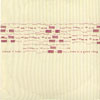 Released back in October 2002, this second release on the City CentreOffices label for the Berlin electronic duo of Bertram Denzel and ErikHuhn layers samples of acoustic instruments with electronic elements ofsynth patches, drum modules and other ambient sounds. The bulk of Time Is A Good Thing'snear sixty minutes are comprised of rhythmic compositional collagesthat convey a relaxed atmosphere without a lot of chord progressionsgoing on to crowd the space being created. The warm, lilting guitarmotifs on "Chicago" are subtly accented with keyboard and anchored byminimal bass to gradually draw in distant drones for a very invitingopening track. "Kinogat" inches along to rhythmic, sampled low-endstatic pops and a single note backbeat while rich synthesizer chordswash over to produce a somewhat melancholic track with an impliedsectional form. The distraction created by the out of place and drawnout "Shaffel" sounds in part to be a mismatch of glitchy rhythmicsamples that continue without any chance of resolving themselves whilelow end rumbles pop up like unwelcomed speed bumps. The tracks beyondthis melee more than make up for it. The whisper of rhythm nailed downby a steady kick drum on "Faller" is played off by sampled,heavy-handed acoustic guitar motifs that through repetition appear tobecome fuller and more intense. On first listen, it may appear thatDenzel + Huhn have grouped together a lot of nice choices for soundsand rhythms to compensate for a lacking sense of traditionalcomposition. However, it does become apparent in the given setting thatthe mixing of the sounds used and the sense of time and placement ofthem are more integral than a lot of melodies and chord progressions.
Released back in October 2002, this second release on the City CentreOffices label for the Berlin electronic duo of Bertram Denzel and ErikHuhn layers samples of acoustic instruments with electronic elements ofsynth patches, drum modules and other ambient sounds. The bulk of Time Is A Good Thing'snear sixty minutes are comprised of rhythmic compositional collagesthat convey a relaxed atmosphere without a lot of chord progressionsgoing on to crowd the space being created. The warm, lilting guitarmotifs on "Chicago" are subtly accented with keyboard and anchored byminimal bass to gradually draw in distant drones for a very invitingopening track. "Kinogat" inches along to rhythmic, sampled low-endstatic pops and a single note backbeat while rich synthesizer chordswash over to produce a somewhat melancholic track with an impliedsectional form. The distraction created by the out of place and drawnout "Shaffel" sounds in part to be a mismatch of glitchy rhythmicsamples that continue without any chance of resolving themselves whilelow end rumbles pop up like unwelcomed speed bumps. The tracks beyondthis melee more than make up for it. The whisper of rhythm nailed downby a steady kick drum on "Faller" is played off by sampled,heavy-handed acoustic guitar motifs that through repetition appear tobecome fuller and more intense. On first listen, it may appear thatDenzel + Huhn have grouped together a lot of nice choices for soundsand rhythms to compensate for a lacking sense of traditionalcomposition. However, it does become apparent in the given setting thatthe mixing of the sounds used and the sense of time and placement ofthem are more integral than a lot of melodies and chord progressions. 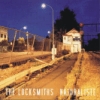 I have sometimes heard The Lucksmiths accused of being too saccharine and while the saccharine charge of the indictment might be indefensible, I would almost certainly take issue with the "too." I would argue that pop such as this would demand a little sweetness, and I submit that The Lucksmiths have found seemingly the perfect amount for their latest album.
I have sometimes heard The Lucksmiths accused of being too saccharine and while the saccharine charge of the indictment might be indefensible, I would almost certainly take issue with the "too." I would argue that pop such as this would demand a little sweetness, and I submit that The Lucksmiths have found seemingly the perfect amount for their latest album.
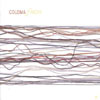 A taste for histrionics may be necessary when listening to the newest music from Alex Paulick and Rob Taylor. Every second of sound is rendered full of nuance and silky ease by way of gentle percussion, wavering melodies, and a deep bass resonance. On top of that is Taylor's voice. It is a voice that immediately reminds of me of lounge act vocalists and jazz crooners howling beneath a deep dark sky lit only by a cloud-veiled moon.
A taste for histrionics may be necessary when listening to the newest music from Alex Paulick and Rob Taylor. Every second of sound is rendered full of nuance and silky ease by way of gentle percussion, wavering melodies, and a deep bass resonance. On top of that is Taylor's voice. It is a voice that immediately reminds of me of lounge act vocalists and jazz crooners howling beneath a deep dark sky lit only by a cloud-veiled moon.
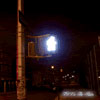 Recorded in a bedroom by three New York artist/musicians, "Young Liars"is the first release from TV On The Radio, and introduces them as afascinating experiment, with a sound that's original and memorable. Themusic groans and creaks beneath the vocals, churning almost, repletewith droning guitars and thudding drums. The percussion is at timesprovided by live drums, or accented with programmed beats, andallegedly sheets of tin. Collages of sampled loops materializemomentarily and then drift away. The most intriguing aspect of "YoungLiars" has to be the vocals, full bodied and soulful, they wouldn'tsound out of place being backed by a funky bass line and horn section,or at the head of some gospel choir like in their acapella rendering ofthe Pixies' "Mr. Grieves." On that hidden track, they sound like awayward choir group, giving the song a great workout that swings as ifit were instead an attack on "Take the A Train." "Satellite" kicks offthe EP with the introduction of this sound, a fuzzy thudding of staticwashed drums and bass with an incessant riff. Then the vocals kick inand it's so unlike the expected, "Now I'm waiting for a signal or asound, where can you be found now? Where can you be, waiting for asignal or a sound?" The song lopes along at a speedy pace, and thelyrics dribble over the beats along with it. "Staring at the Sun" is anabstract love song, a collection of images or glances from up close."Blind" is a slow, creeping track that pulses along as errant noisesappear just above it. The group has a knack for memorable lines thatconnect through their lyrical collections like "My love is a suckerbet." It's a departure from the speed of the first tracks, showing thatthey're capable of producing more methodical atmospheres, and againshowcasing those vocals as they play around in the space left by theinstrumentation. "Young Liars" is an excellent first taste that leavesus to anticipate the upcoming full length
Recorded in a bedroom by three New York artist/musicians, "Young Liars"is the first release from TV On The Radio, and introduces them as afascinating experiment, with a sound that's original and memorable. Themusic groans and creaks beneath the vocals, churning almost, repletewith droning guitars and thudding drums. The percussion is at timesprovided by live drums, or accented with programmed beats, andallegedly sheets of tin. Collages of sampled loops materializemomentarily and then drift away. The most intriguing aspect of "YoungLiars" has to be the vocals, full bodied and soulful, they wouldn'tsound out of place being backed by a funky bass line and horn section,or at the head of some gospel choir like in their acapella rendering ofthe Pixies' "Mr. Grieves." On that hidden track, they sound like awayward choir group, giving the song a great workout that swings as ifit were instead an attack on "Take the A Train." "Satellite" kicks offthe EP with the introduction of this sound, a fuzzy thudding of staticwashed drums and bass with an incessant riff. Then the vocals kick inand it's so unlike the expected, "Now I'm waiting for a signal or asound, where can you be found now? Where can you be, waiting for asignal or a sound?" The song lopes along at a speedy pace, and thelyrics dribble over the beats along with it. "Staring at the Sun" is anabstract love song, a collection of images or glances from up close."Blind" is a slow, creeping track that pulses along as errant noisesappear just above it. The group has a knack for memorable lines thatconnect through their lyrical collections like "My love is a suckerbet." It's a departure from the speed of the first tracks, showing thatthey're capable of producing more methodical atmospheres, and againshowcasing those vocals as they play around in the space left by theinstrumentation. "Young Liars" is an excellent first taste that leavesus to anticipate the upcoming full length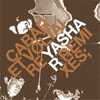 In 1982, the original version of "Yashar" ushered in a new phase ofCabaret Voltaire. While the group had been working for years with drummachines, they were only up until then teasing the ideas of dancemusic. Originally on the 2x45release and later remixed for 12" by John Robie, this was undeniablythe beginning of what soon became their dancefloor-friendly big funkphase. Once the classic opening voice-only sample sounds, "there's 70billion people in there / where're they hiding," everybody knows thefamiliar pumping beats and evil synth melody that is about to follow.While remixing songs that weren't exactly discotheque smashes hasbecome commonplay, there's a lot at stake when considering remixingsomething that has become somewhat of a sacred underground dancefloorlegend. The results are very nice indeed. This three-track 12" onlyrelease is covered on side one by a vicious, nearly ten minutethunderous mayhem by Alter Ego which I have had to force myself fromnot repeating endlessly. While only the underlying synth stem remains,the power and energy from the original is exponentially magnified. Tenminutes can be a long time but with this, it seems like it couldhonestly go on forever. Side two features the proverbial rework byRichard H. Kirk: "The Man from Basra" remix honorably matches theenergy set forth by the A side. Kirk imports the familiar vocal samplesfrom the original and continues on in a hypnotic five minute synth soupof constructive 808, 909, and African-imitative sounds. Rounding outthe second side is The All Seeing I remix, which most closely resemblesthe original remix done by John Robie with the singing girls and higherpitched synth melody. This version also pays tribute to the popularsounds of the 1990s Cabaret Voltaire with its downtempo beats, heavilyrelied upon by primitive analogue drum machine sounds. The only beef Ihave with the single is its $9 import 12" price that I had to forkover, making me recommend NovaMute to do another goddamned CDcompilation like the one aforementioned this week. Die hard non-UK fanswho miss out on this risk their chances of this not making the nextcompilation (or no next compilation at all). With any luck, Mute willwise up and give a break for their export single prices.
In 1982, the original version of "Yashar" ushered in a new phase ofCabaret Voltaire. While the group had been working for years with drummachines, they were only up until then teasing the ideas of dancemusic. Originally on the 2x45release and later remixed for 12" by John Robie, this was undeniablythe beginning of what soon became their dancefloor-friendly big funkphase. Once the classic opening voice-only sample sounds, "there's 70billion people in there / where're they hiding," everybody knows thefamiliar pumping beats and evil synth melody that is about to follow.While remixing songs that weren't exactly discotheque smashes hasbecome commonplay, there's a lot at stake when considering remixingsomething that has become somewhat of a sacred underground dancefloorlegend. The results are very nice indeed. This three-track 12" onlyrelease is covered on side one by a vicious, nearly ten minutethunderous mayhem by Alter Ego which I have had to force myself fromnot repeating endlessly. While only the underlying synth stem remains,the power and energy from the original is exponentially magnified. Tenminutes can be a long time but with this, it seems like it couldhonestly go on forever. Side two features the proverbial rework byRichard H. Kirk: "The Man from Basra" remix honorably matches theenergy set forth by the A side. Kirk imports the familiar vocal samplesfrom the original and continues on in a hypnotic five minute synth soupof constructive 808, 909, and African-imitative sounds. Rounding outthe second side is The All Seeing I remix, which most closely resemblesthe original remix done by John Robie with the singing girls and higherpitched synth melody. This version also pays tribute to the popularsounds of the 1990s Cabaret Voltaire with its downtempo beats, heavilyrelied upon by primitive analogue drum machine sounds. The only beef Ihave with the single is its $9 import 12" price that I had to forkover, making me recommend NovaMute to do another goddamned CDcompilation like the one aforementioned this week. Die hard non-UK fanswho miss out on this risk their chances of this not making the nextcompilation (or no next compilation at all). With any luck, Mute willwise up and give a break for their export single prices. Easily one of my favorite labels, Novamute serves as the dance-orientedwing of the ever-enduring Mute Records machine. More than a fair dealof its materials comes out exclusively on vinyl, leaving the widerconsumer market unexposed to some of the best electronic music around.An effort to both rectify this and to tap into the growing market of CDand "digital" DJs, 2CDs and MP3soffers 16 audio tracks and 28 somewhat overlapping MP3 files.Considering the strength of the Novamute roster (as well as that of theextended Mute family), the selections range from techno floorfillersand electro booty grooves to chin-scratching warm-ups andindustrial/EBM reworks. Though there are many enjoyabledancefloor-friendly cuts, the first noteworthy track comes from S.I.Futures. The FX mix of "Eurostar" takes the melodic vocoding of theelectro original and injects a rejuvenating funky vibe. Speedy J'sunedited cut of "Krekc," the lead single from his recent Loudboxeralbum, blisters the eardrums with seriously banging techno meant forwarehouses. EBM fanatics will either be disturbed or delighted to hearThomas P. Heckmann's update of the Nitzer Ebb anthem "Join In TheChant." Though the distinctive bassline remains admirably true to theoriginal, Douglas McCarthy's completely vocoded vocals seem almostblasphemous. As an industrial club DJ, I have tested the dancefloorseveral times with this, and while it does not go over as well as theoriginal, it still gets a great crowd response. Continuing theindustrial updates, Akufen's quirky remix of Cabaret Voltaire's "NagNag Nag" mangles the original beyond recognition yet manages to salvagethe wreck by throwing in a gritty 4/4 beat at about the halfway point.The laugh factor behind Debasser's "Fat Girls" thankfully does not takeaway from its appeal as a bass heavy booty mover, and sounds far betterthan most of the socalled "ghetto-tech" coming out today. HansWeekhout's "Rhythm Is On A Mission" treads a murky territory betweentechno and progressive house, with echoing synth stabs and tribalmachine beats. The MP3 content gives plenty of B-sides includingfurther goodies from the artists mentioned above as well as Tim Wright,Umek, Steve Stoll, and Luke Slater. All in all, this is not merely agreat compilation, but rather a pioneering release that will hopefullybegin a trend.
Easily one of my favorite labels, Novamute serves as the dance-orientedwing of the ever-enduring Mute Records machine. More than a fair dealof its materials comes out exclusively on vinyl, leaving the widerconsumer market unexposed to some of the best electronic music around.An effort to both rectify this and to tap into the growing market of CDand "digital" DJs, 2CDs and MP3soffers 16 audio tracks and 28 somewhat overlapping MP3 files.Considering the strength of the Novamute roster (as well as that of theextended Mute family), the selections range from techno floorfillersand electro booty grooves to chin-scratching warm-ups andindustrial/EBM reworks. Though there are many enjoyabledancefloor-friendly cuts, the first noteworthy track comes from S.I.Futures. The FX mix of "Eurostar" takes the melodic vocoding of theelectro original and injects a rejuvenating funky vibe. Speedy J'sunedited cut of "Krekc," the lead single from his recent Loudboxeralbum, blisters the eardrums with seriously banging techno meant forwarehouses. EBM fanatics will either be disturbed or delighted to hearThomas P. Heckmann's update of the Nitzer Ebb anthem "Join In TheChant." Though the distinctive bassline remains admirably true to theoriginal, Douglas McCarthy's completely vocoded vocals seem almostblasphemous. As an industrial club DJ, I have tested the dancefloorseveral times with this, and while it does not go over as well as theoriginal, it still gets a great crowd response. Continuing theindustrial updates, Akufen's quirky remix of Cabaret Voltaire's "NagNag Nag" mangles the original beyond recognition yet manages to salvagethe wreck by throwing in a gritty 4/4 beat at about the halfway point.The laugh factor behind Debasser's "Fat Girls" thankfully does not takeaway from its appeal as a bass heavy booty mover, and sounds far betterthan most of the socalled "ghetto-tech" coming out today. HansWeekhout's "Rhythm Is On A Mission" treads a murky territory betweentechno and progressive house, with echoing synth stabs and tribalmachine beats. The MP3 content gives plenty of B-sides includingfurther goodies from the artists mentioned above as well as Tim Wright,Umek, Steve Stoll, and Luke Slater. All in all, this is not merely agreat compilation, but rather a pioneering release that will hopefullybegin a trend. - Debasser - Fat Girls
- Hans Weekhout - Rhythm is On A Mission
- Cabaret Voltaire - Nag Nag Nag (Akufen remix)
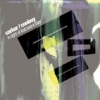 Paul Conboy and Adrian Corker create instrumental music with mostlyelectronic percussion and nuance, but layered with acoustic guitars.Once I slipped their debut on the stereo, I was immediately at ease,relaxed, and open to every possibility. Playful bass and latin jazzrhythms mark one track, slower moody computer whines and echoed guitarthe next, but throughout there's a coordinated groove or feel thatevery composition nuzzles up to lovingly. It's not stunning,demonstrative, or the next big style shift, but it doesn't have to beto be effective. Corker/Conboy may borrow a bit from the aesthetic ofothers — Tortoise, Pullman, and Isotope 217 come to mind — but itdoesn't mean they breathe any less life into their work. Playing mostof the instruments themselves, the duo have a true fluidity and ease totheir songs. The music starts off lightly, establishing rhythm andtempo, and doesn't build so much as coagulate. Each part or instrumenthas its own time, its own place, but ultimately they exist to fulfillthe needs of the whole composition. Listening to a track like "From theHip," hearing its simplicity, and being thrown slightly by the littletinges here and there set my mind at ease, almost into REM-like stasis.One minute I was in a sweaty nightclub hearing a neo jazz outfit, thenext in the rainforest hearing the most advanced tribe of natives tapout their steady labor. In Light of That Learnt Laterflows through despite its various genre bends, and it's an excellentdriving companion — the best compliment I can think to give it.
Paul Conboy and Adrian Corker create instrumental music with mostlyelectronic percussion and nuance, but layered with acoustic guitars.Once I slipped their debut on the stereo, I was immediately at ease,relaxed, and open to every possibility. Playful bass and latin jazzrhythms mark one track, slower moody computer whines and echoed guitarthe next, but throughout there's a coordinated groove or feel thatevery composition nuzzles up to lovingly. It's not stunning,demonstrative, or the next big style shift, but it doesn't have to beto be effective. Corker/Conboy may borrow a bit from the aesthetic ofothers — Tortoise, Pullman, and Isotope 217 come to mind — but itdoesn't mean they breathe any less life into their work. Playing mostof the instruments themselves, the duo have a true fluidity and ease totheir songs. The music starts off lightly, establishing rhythm andtempo, and doesn't build so much as coagulate. Each part or instrumenthas its own time, its own place, but ultimately they exist to fulfillthe needs of the whole composition. Listening to a track like "From theHip," hearing its simplicity, and being thrown slightly by the littletinges here and there set my mind at ease, almost into REM-like stasis.One minute I was in a sweaty nightclub hearing a neo jazz outfit, thenext in the rainforest hearing the most advanced tribe of natives tapout their steady labor. In Light of That Learnt Laterflows through despite its various genre bends, and it's an excellentdriving companion — the best compliment I can think to give it. 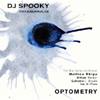 If you happened to catch any of the installments of Ken Burns'sprawling nineteen hour documentary on jazz a few years back, you mayhave wondered what exactly happened to jazz in the second half of thetwentieth century. The filmmaker's heavy reliance on Wynton Marsalisand the various other talented members of his family tended to skew thefocus of the series in the direction of Wynton's classicist ideals. The1960's and beyond are crammed into the last hour of this mammothseries, an injustice to say the least. Adding insult to injury,Wynton's commentary is particularly dismissive of the strides taken byicons like Miles Davis toward a more inclusive and adaptive mode ofjazz music known as fusion. When it is referenced at all, the music ofMiles-disciple Chick Corea or electric-guitar virtuoso Pat Metheny istalked about as if it were a negative influence threatening to ruinjazz. This is a shame, because the experiments of fusion andavant-garde jazz should be viewed as every bit as vital as the classicstyle; god forbid anyone try and avoid becoming stale. For the past fewyears, indie label Thirsty Ear has issued music under their 'BlueSeries' banner, releasing music that blends and transforms jazz, hiphop, rap, and electronic music with some interesting pairings. On thisrelease, modern jazz pianist and Blue Series curator Matthew Shipp andhis group back up DJ Spooky as he indulges his thirst for progressiveintellectualism in music. Spooky clearly wants to incorporate as muchas he can into his music, as evidenced by a few of the names dropped inthe liner notes (Duchamps, Dostoyevsky, Cage, Ellington, Berners-Lee,Bambatta). In text this might make you wary, but on record Optometryis a fascinating excursion, with Spooky and Shipp navigating throughthe blurry water of fusion brilliantly. Kicking off with the familiarride and high hat clicking, the slinky upright bass line (manned bySpooky himself) rising through, Optometry throws a curveball bycutting, mixing, and looping the beats, a subtle addition that workswell. Programmed beats, electronic throbs, and wailing violin all findspots on the record, and are used to great effect, counterpointing thetraditional (but only in instrumentation) jazz quartet. Shipp is aversatile pianist, and his hands float across the keys weaving amazingpatterns of tone, able to rise above the mix whenever necessary. Guestsappear, giving us Carl Hancock Rux's smooth spoken word delivery over"Asphalt (Tome II)," where he waxes on about Coltrane and Lil' Kim,minidisks and turntables. Essentially, it is the mission concept of therecord. Jon McPhee's tenor sax croaks around Rux's witnessing, makingthis a true standout. High Priest of Anti-Pop Consortium and Napoleonof IsWhat also appear, lending their hip-hop skills other tracks, theformer sounding stronger than the latter. 'Optometry' is the essence ofexperimentation. Grounded in the jazz medium, it looks outside ofitself for inspiration and seeks to infuse new blood, not just intojazz, but into the styles it couples with. Jazz is not a museum. Musicnever should be. It has strength and power, enough to offer somethingto contemporary music and retain its rich history. The Blue Seriesseems to have a hold on that, thankfully. 'Optometry' is not at all thekind of record you would find in Wynton Marsailis' collection, but inmy opinion, that stands as more of a recommendation of this than justabout anything else does.
If you happened to catch any of the installments of Ken Burns'sprawling nineteen hour documentary on jazz a few years back, you mayhave wondered what exactly happened to jazz in the second half of thetwentieth century. The filmmaker's heavy reliance on Wynton Marsalisand the various other talented members of his family tended to skew thefocus of the series in the direction of Wynton's classicist ideals. The1960's and beyond are crammed into the last hour of this mammothseries, an injustice to say the least. Adding insult to injury,Wynton's commentary is particularly dismissive of the strides taken byicons like Miles Davis toward a more inclusive and adaptive mode ofjazz music known as fusion. When it is referenced at all, the music ofMiles-disciple Chick Corea or electric-guitar virtuoso Pat Metheny istalked about as if it were a negative influence threatening to ruinjazz. This is a shame, because the experiments of fusion andavant-garde jazz should be viewed as every bit as vital as the classicstyle; god forbid anyone try and avoid becoming stale. For the past fewyears, indie label Thirsty Ear has issued music under their 'BlueSeries' banner, releasing music that blends and transforms jazz, hiphop, rap, and electronic music with some interesting pairings. On thisrelease, modern jazz pianist and Blue Series curator Matthew Shipp andhis group back up DJ Spooky as he indulges his thirst for progressiveintellectualism in music. Spooky clearly wants to incorporate as muchas he can into his music, as evidenced by a few of the names dropped inthe liner notes (Duchamps, Dostoyevsky, Cage, Ellington, Berners-Lee,Bambatta). In text this might make you wary, but on record Optometryis a fascinating excursion, with Spooky and Shipp navigating throughthe blurry water of fusion brilliantly. Kicking off with the familiarride and high hat clicking, the slinky upright bass line (manned bySpooky himself) rising through, Optometry throws a curveball bycutting, mixing, and looping the beats, a subtle addition that workswell. Programmed beats, electronic throbs, and wailing violin all findspots on the record, and are used to great effect, counterpointing thetraditional (but only in instrumentation) jazz quartet. Shipp is aversatile pianist, and his hands float across the keys weaving amazingpatterns of tone, able to rise above the mix whenever necessary. Guestsappear, giving us Carl Hancock Rux's smooth spoken word delivery over"Asphalt (Tome II)," where he waxes on about Coltrane and Lil' Kim,minidisks and turntables. Essentially, it is the mission concept of therecord. Jon McPhee's tenor sax croaks around Rux's witnessing, makingthis a true standout. High Priest of Anti-Pop Consortium and Napoleonof IsWhat also appear, lending their hip-hop skills other tracks, theformer sounding stronger than the latter. 'Optometry' is the essence ofexperimentation. Grounded in the jazz medium, it looks outside ofitself for inspiration and seeks to infuse new blood, not just intojazz, but into the styles it couples with. Jazz is not a museum. Musicnever should be. It has strength and power, enough to offer somethingto contemporary music and retain its rich history. The Blue Seriesseems to have a hold on that, thankfully. 'Optometry' is not at all thekind of record you would find in Wynton Marsailis' collection, but inmy opinion, that stands as more of a recommendation of this than justabout anything else does. It's rare that I hear a record and feel like every single song on itmakes me want to shut up and dance, but that's exactly what the debutfull-length by Susumu Mukai’s Zongamin does to me. It very well may bethe pop club album of the year, because it's this type of music thatgets the bodies and booties on the dancefloor. Zongamin's auralpastiche is an amalgam of myriad styles and musical configurations.Dance and club music created with live and electronic instrumentsalike, using latin, funk, jazz, rock, and techno rhythms, and allblended together into a formula that stutters, grooves, tweaks andslams. I took it all in one listen, just giving in to whatever washedover the speakers next. It wasn't easy: not any two songs on the recordhave the same flavor, and it's hard to give in to the whole enchilada.That's not a huge surprise for a first effort, as if Mukai is trying tofind a voice and gives his all in multiple directions. Something tellsme, though, that Mukai intended Zongamin to sound this disjointed ashis vision of what pop music should be: a place where anything andeverything is allowed. "Serious Trouble" gets the party started withits discobass and stroll style, but gives in to the drive of "Spiral,"easily the best track. "Painless," "Double Dostiev" and "Whiplash"makes for a great album centerpiece, clubbing it up, twisting andfreaking, then serving the almighty pummel into submission. After that,the album gets plain strange, with the differing styles fluctuating toextremes. The good news is that the record is an accomplished debutfrom a very talented artist. The bad news is he's being pulled in toomany directions at once, but would probably be tied down too much by asingular style. One thing is certain: Zongamin is an original voice,definitely the product of many influences, that can certainly generatemore than a few earnest gyrations.
It's rare that I hear a record and feel like every single song on itmakes me want to shut up and dance, but that's exactly what the debutfull-length by Susumu Mukai’s Zongamin does to me. It very well may bethe pop club album of the year, because it's this type of music thatgets the bodies and booties on the dancefloor. Zongamin's auralpastiche is an amalgam of myriad styles and musical configurations.Dance and club music created with live and electronic instrumentsalike, using latin, funk, jazz, rock, and techno rhythms, and allblended together into a formula that stutters, grooves, tweaks andslams. I took it all in one listen, just giving in to whatever washedover the speakers next. It wasn't easy: not any two songs on the recordhave the same flavor, and it's hard to give in to the whole enchilada.That's not a huge surprise for a first effort, as if Mukai is trying tofind a voice and gives his all in multiple directions. Something tellsme, though, that Mukai intended Zongamin to sound this disjointed ashis vision of what pop music should be: a place where anything andeverything is allowed. "Serious Trouble" gets the party started withits discobass and stroll style, but gives in to the drive of "Spiral,"easily the best track. "Painless," "Double Dostiev" and "Whiplash"makes for a great album centerpiece, clubbing it up, twisting andfreaking, then serving the almighty pummel into submission. After that,the album gets plain strange, with the differing styles fluctuating toextremes. The good news is that the record is an accomplished debutfrom a very talented artist. The bad news is he's being pulled in toomany directions at once, but would probably be tied down too much by asingular style. One thing is certain: Zongamin is an original voice,definitely the product of many influences, that can certainly generatemore than a few earnest gyrations.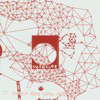 Subtlety can either add to a composition or take away from it. Ifunderstatement is enough to carry a tune then there's no reason to addanything to it. It Would Have Lived Hereis a very careful album and ends up benefitting for it. Everything isbare bones and this approach works very well. Most of the tones usedare metallic in nature and percussive but more often than not there areless musical and more found-sound effects used. Everything beginsrather enigmatically: there is rhythm, but it heeds to no timesignature. There is a bass-like strumming throughout and the sound oftiny cymbals chiming everywhere, but no melody to speak of. Randomsounds bounce back and forth between my ears and now and again there'sa quick stab of recognizable speech but it's distant. Metallic soundsrun throughout this full-length but in different forms. Some are usedto create short melodic lines, others produce a constant backgroundnoise that ties the various tracks together in different ways, andothers simply pop in and out of the music like images of killing yourboss during a hectic day of work. Nothing ever jumps out and grabs myattention immediately. Every moment is saturated with interestingsounds that stretch, echo, and breathe without interference. The sensethat the sounds are somehow coming from a living, breathing thing isstrong and a bit unsettling at times. Snawklor obviously pay closeattention to detail and the result of their patience is nothing shortof beautiful. Despite its rather abstract nature it is highlyaccessible and fun to listen to.
Subtlety can either add to a composition or take away from it. Ifunderstatement is enough to carry a tune then there's no reason to addanything to it. It Would Have Lived Hereis a very careful album and ends up benefitting for it. Everything isbare bones and this approach works very well. Most of the tones usedare metallic in nature and percussive but more often than not there areless musical and more found-sound effects used. Everything beginsrather enigmatically: there is rhythm, but it heeds to no timesignature. There is a bass-like strumming throughout and the sound oftiny cymbals chiming everywhere, but no melody to speak of. Randomsounds bounce back and forth between my ears and now and again there'sa quick stab of recognizable speech but it's distant. Metallic soundsrun throughout this full-length but in different forms. Some are usedto create short melodic lines, others produce a constant backgroundnoise that ties the various tracks together in different ways, andothers simply pop in and out of the music like images of killing yourboss during a hectic day of work. Nothing ever jumps out and grabs myattention immediately. Every moment is saturated with interestingsounds that stretch, echo, and breathe without interference. The sensethat the sounds are somehow coming from a living, breathing thing isstrong and a bit unsettling at times. Snawklor obviously pay closeattention to detail and the result of their patience is nothing shortof beautiful. Despite its rather abstract nature it is highlyaccessible and fun to listen to. On Frankie Sparo's last full-length, My Red Scare,he created his own brand of chilling folk mostly on his lonesome withthe help of some friends and labelmates. Now his group has grown to afull-fledged and powerful duo with the addition of Nadia Moss on anyinstrument with keys. He's also brought along some old friends from ASilver Mt. Zion: Sophie, Thierry and Efrim all play on the album withthe latter also handling recording duties at Hotel2Tango. The result isa growth from the previous record while retaining the same qualitiesthat made Sparo so engaging in the first place. Welcome Crummy Mystics is also a jarring, hair-raising listen, as the new orchestral direction Sparo started on Arena Hostilesees fruition with new original compositions that explore differentrhythms and musical forms. Odd sounds captured here and there make theheart jump, as does Sparo's voice and delivery. "Hospitalville"features compression effects that scatter and depurify the drums andSparo's vocals. He does it himself on "Back on Speed," screaming andletting his voice buckle under the pressure, backed at the end by abizarre choir. The minimalism of the past is still present on a fewsongs, such as "Sleds to Moderne" and "Bright Angel Park," but thearrangements and contributions of the guest musicians give the musicand performance amazing depth. The addition of Moss cannot beunderstated, however, as it is her instrumentation that is the mostvital, that separates these structures from others in the genre like somuch musical three-point lighting. Together, she and Frankie Sparo areforming a new language that they want to teach the world. It soundsgreat so far, and there's nothing lost in the translation. -
On Frankie Sparo's last full-length, My Red Scare,he created his own brand of chilling folk mostly on his lonesome withthe help of some friends and labelmates. Now his group has grown to afull-fledged and powerful duo with the addition of Nadia Moss on anyinstrument with keys. He's also brought along some old friends from ASilver Mt. Zion: Sophie, Thierry and Efrim all play on the album withthe latter also handling recording duties at Hotel2Tango. The result isa growth from the previous record while retaining the same qualitiesthat made Sparo so engaging in the first place. Welcome Crummy Mystics is also a jarring, hair-raising listen, as the new orchestral direction Sparo started on Arena Hostilesees fruition with new original compositions that explore differentrhythms and musical forms. Odd sounds captured here and there make theheart jump, as does Sparo's voice and delivery. "Hospitalville"features compression effects that scatter and depurify the drums andSparo's vocals. He does it himself on "Back on Speed," screaming andletting his voice buckle under the pressure, backed at the end by abizarre choir. The minimalism of the past is still present on a fewsongs, such as "Sleds to Moderne" and "Bright Angel Park," but thearrangements and contributions of the guest musicians give the musicand performance amazing depth. The addition of Moss cannot beunderstated, however, as it is her instrumentation that is the mostvital, that separates these structures from others in the genre like somuch musical three-point lighting. Together, she and Frankie Sparo areforming a new language that they want to teach the world. It soundsgreat so far, and there's nothing lost in the translation. - 


